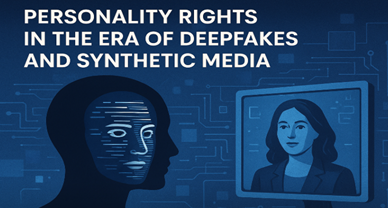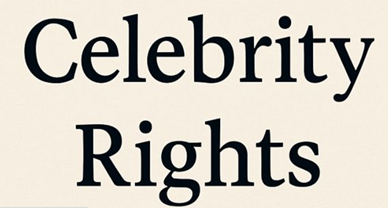De Minimis & Copyright Infringement : Where To Draw The Line?
INTRODUCTION
Copyright infringement and De Minimis are often replaced to complement each other. However, de minimis is sometimes used as a defence in a copyright lawsuit. De Minimis as a concept comes from the Latin phrase De Minimis Non-Curat Lex which breaks down to mean that law does not care about or pay attention to very minor or trivial issues, hence it does not require judicial notice and scrutiny. More often than not, the lawsuits filed for copyright infringement are cases of de minimis and thereto, get dismissed on the anvil of frivolity.
Most nations throughout the world do not have laws that formally recognise this principle. However, courts have tried their best to apply the doctrine whenever needed in countries like India and the United States of America. As a result, this idea is largely reliant on international legal precedents.
WHY IS DE MINIMIS PURSUED?
De minimis’ existence may appear odd given that minor infractions are unlikely to end up in court in the first place. After all, the expense of pursuing a frivolous lawsuit will frequently outweigh any potential rewards if the case is successful for the prospective plaintiff or prosecution. There are several possible reasons why a de minimis litigation is still pursued. Firstly, the definition of harm is different for everyone and thereto, the party bringing upon the lawsuit might consider it differently even if the amount in controversy is small. Secondly, the potential plaintiff’s costs will never equal the overall costs of adjudication. A lawsuit might not be worth bringing up from a social standpoint however, from an individual perspective it might be otherwise. Third, plaintiffs could act irrationally or be uniformed.[1] Regardless of the cause, the long legal history of de minimis implies that many unimportant issues do end up in court and that there is a need for a system to handle them. In this sense, a coherent theory of the use of de minimis will go a long way in efficient disposal of such cases.
DE MINIMIS IN COPYRIGHT LAW
In the landmark case of Bell v. Wilmot Storage Services[2], the court laid down the scope and extent of de minimis while stating that it can be used in matter of copying of the copyrighted content instead of just a mere display of such work. The defence only applies to the extent of a plaintiff’s copyrighted work’s usage, not how the defendant uses it.
[Image Sources : Shutterstock]
In the case of Super Cassette Industries and Ors. v. Chintamani Rao and Ors.[3], the Delhi High Court did not award the de minimis defence taken up and noted that the copyright law in India specifically outlays the rights available to parties as well as the exceptions to copyright infringement and it nowhere mentions de minimis as an exception. This was the Indian judiciary’s first encounter with De Minimis. The court further held that the doctrine of de minimis cannot legally serve as a defence in this case as it has not been included in the Act.
The Delhi High Court Division Bench was concerned with two combined cases in the 2012 India TV Independent News Service v. Yashraj Films Pvt. Ltd[5]. In the first instance, the plaintiff claimed that the defendants had appropriated the opening line of the well-known Bollywood song “Kajra Re Kajra Re” for use in a television commercial. In the second instance, an aspiring singer performed nine stanzas from nine of the songs that had made her famous on the chat show “India Beats.” The plaintiffs in both of these cases alleged that the defendants violated their copyright in the sound recordings. The court noted that a fractional usage of a song in small amounts does not comprise a copyright infringement but is rather the case of de minimis. Thus, de minimis as a concept in copyright infringement allegations was given recognition by the Indian judiciary as well.
In another case of Saregama India Ltd. v. Viacom 18 Motion Picture & Ors[6]., the Apex Court ruled that the usage of the song “mere sapno ki raani” for a small amount of time, say 7 secs as in this case, is a case of de minimis and cannot be termed as a copyright infringement.
De minimis in copyright can be used for different reasons such as for fair use analysis, substantial similarity analysis[7], among its other such uses. Thus, the scope of the doctrine is wide but has been limited by ways of judicial precedents, in the absence of any explicit mention of the doctrine in any statute.
FACTORS KEPT IN CONSIDERATION BY COURTS BEFORE APPLYING DE MINIMIS[8]
THE SIZE AND TYPE OF HARM
The size and the extent of the harm caused by the relevant legal violation is the first and most significant de minimis consideration. The size of the use must be negligible for de minimis to be an effective defence, and the copyright owner should not have suffered any material harm as a result of the use. Small monetary losses do not, however, ensure a de minimis holding. Similar to this, it is impossible to set a dollar threshold at which de minimis cannot be applied. Some courts have used this maxim in cases when the sum in dispute is substantial in absolute terms but modest in relative terms. For instance, the Supreme Court determined in Industrial Ass’n of San Francisco v. United States[9] that a dispute over a few thousand dollars was de minimis when compared to the overall economic activity of over $100,000,000.
THE COST OF ADJUDICATION
In the event that a claim of infringement is brought against such use, the courts ought to take the cost of adjudication into account. An infringing use must be de minimis in order for it to qualify since the social cost of deciding the copyright claim is substantially more than the benefit of the claim overall. Some courts have a broad definition of the expenses of adjudication, contending that they also include the opportunity cost of taking up a busy court’s time in addition to the costs immediately expended by the court. It can thereto be said that only when the cost of adjudication fairly outweighs the harm incurred on the party that a de minimis allegation can be justified.
THE PURPOSE OF THE VIOLATED LEGAL OBLIGATION
The courts also have to consider whether the de minimis implementation will actually serve the purpose or would even materially frustrate the contested legal responsibility. It must be proven that the infringer’s use of the protected work is not being used unlawfully in order to qualify for the de minimis defence.
EFFECT ON THE LEGAL RIGHTS OF THIRD PARTIES
In most cases, the fourth de minimis reason is utilised to support denying the defence. Even if the current dispute, taken alone, would be eligible for de minimis treatment, courts may choose to adjudicate where doing so would significantly affect the legal rights of third parties. The infringing use must have a major negative effect on or result in losses for any third parties in order to qualify for the de minimis defence.
INTENT
Finally, courts frequently take the accused wrongdoer’s intent into account when assessing de minimis claims. Some courts hold that morally guilty actors do not receive de minimis treatment since wilfully wrongdoing behaviour should never be tolerated. If it is proven from the evidence in a case that the accused did not intend to steal or take something that belonged to another person for their personal profit, then such use is admissible for the de minimis defence.
Conclusion
The recent surge in technological advancements and social media hacks have resulted in trivial violations being brought to court that necessarily may not be copyright infringements. Music sampling has also rapidly emerged as another violation that has to undergo scrutiny to prove that the sampled works infringes the original one. Therefore, the above-mentioned factors assist the court in determining the nature of the allegation put forth and whether the defendant can take the recourse of the doctrine of de minimis or not. These factors have to be cumulatively applied with due caution and diligence as there is only a wafer-thin-ice line separating copyright infringement from de minimis.
CITATIONS/REFERENCES
JOURNAL PUBLICATIONS
- Andrew Inesi, A Theory of De Minimis and a proposal for its application in Copyright, Berkeley Technology Law Journal Vol. 21, No. 2 (Spring 2006), pp. 945-995 (51 pages)
ONLINE ARTICLES
- Vishesh Kumar, De Minimis in Copyright Law- Trivial or Proceed to Trial, Mondaq, (Jan. 8, 2023, 9:52 PM), https://www.mondaq.com/india/copyright/1097844/de-minimis-in-copyright-law–trivial-or-proceed-to-trial
CASE LAWS
- Bell v. Wilmott Storage Services, LLC No. 19-55882 (9th 2021).
- Super Cassette Industries and Ors. v. Chintamani Rao and Ors, 2011 SCC OnLine Del 4712.
- India TV Independent News Service v. Yashraj Films Pvt. Ltd, 2012 SCC OnLine Del 4298.
- Saregama India Ltd. v. Viacom 18 Motion Picture & Ors, 2013 SCC OnLine Cal 3729.
- G. Anand v. Deflux Films (1978) 4 SCC 118.
- Industrial Ass’n of San Francisco v. United States, 57 F Supp. 57 (1944).
Author: Akshita Shandil, in case of any queries please contact/write back to us at support@ipandlegalfilings.com or IP & Legal Filing.
[1]Andrew Inesi, A Theory of De Minimis and a proposal for its application in Copyright, Berkeley Technology Law Journal Vol. 21, No. 2 (Spring 2006), pp. 945-995 (51 pages).
[2]Bell v. Wilmott Storage Services, LLC No. 19-55882 (9th Cir. 2021).
[3]Super Cassette Industries and Ors. v. Chintamani Rao and Ors, 2011 SCC OnLine Del 4712.
[4] Vishesh Kumar, De Minimis in Copyright Law- Trivial or Proceed to Trial, Mondaq, (Jan. 8, 2023, 9:52 PM), https://www.mondaq.com/india/copyright/1097844/de-minimis-in-copyright-law–trivial-or-proceed-to-trial.
[5]India TV Independent News Service v. Yashraj Films Pvt. Ltd, 2012 SCC OnLine Del 4298.
[6]Saregama India Ltd. v. Viacom 18 Motion Picture & Ors, 2013 SCC OnLine Cal 3729.
[7]R.G. Anand v. Deflux Films (1978) 4 SCC 118.
[8]Id. at 5.
[9]Industrial Ass’n of San Francisco v. United States, 57 F Supp. 57 (1944).



